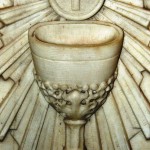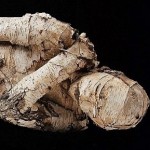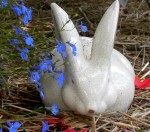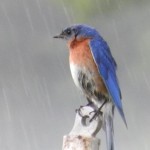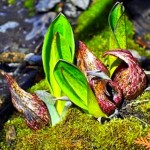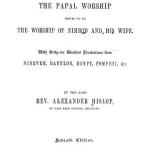 The Shroud of Turin was wrapped around the body of Jesus after it was taken down from the cross. Experts in the natural sciences began examining the shroud toward the end of the twentieth century. Botanical experts on the research team found the imprints of plants and grains of pollen that can serve as seasonal calendar and geographic indicators.
The Shroud of Turin was wrapped around the body of Jesus after it was taken down from the cross. Experts in the natural sciences began examining the shroud toward the end of the twentieth century. Botanical experts on the research team found the imprints of plants and grains of pollen that can serve as seasonal calendar and geographic indicators.
Four plants on the shroud are significant because, as researchers Danin and Baruch report, “…the assemblage…occurs in only one rather small spot on earth, this being the Judean mountains and the Judean Desert of Israel, in the vicinity of Jerusalem.”[1. Danin, et al. Flora of the Shroud of Turin, p. 18.]
Those experts succeeded in identifying thirty-six species of plants[2. More than thirty-six have been found on the shroud but await unequivocal species identification.] on the shroud. They discovered that almost all of the flower images remaining on the cloth and the highest concentration of pollens were where the head of the corpus would have been lying; plant parts and pollens were also located throughout the rest of the shroud.
Plants Found on the Shroud of Turin:[3. Danin, et al. Flora of the Shroud of Turin, p. 12.]
|
Botanical Name |
Common Name (English) |
|
Anabasis aphylla |
Anabasis |
|
Acacia albida |
Acacia |
|
Artemisia herba-alba |
White Wormwood |
|
Atraphaxis spinosa |
Atraphaxis |
|
Capparis ovata |
Caper |
|
Carduus |
Carduus Thistle |
|
Cedrus libanoticus |
Cedrus |
|
Echinops glaberrimus |
Echinops |
|
Fagonia mollis |
Fagonia |
|
Gundelia tournefortii |
Tumble Thistle |
|
Haplophyllum tuberculatum |
Haplophyllum |
|
Hyoscyamus reticulatus |
Henbane |
|
Linum mucronatum |
Armenian Flax |
|
Paliurus spina-christi |
Jerusalem Thorn, Garland Thorn, or Crown of Thorns |
|
Prosopis farcta |
Dwarf Mesquite, Syrian Mesquite |
|
Reaumuria hirtella |
Reaumuria |
|
Ricinus communis |
Castor Oil Plant |
|
Scabiosa prolifera |
Carmel Daisy |
|
Scirpus |
Scirpus |
|
Secale |
Rye |
|
Suaeda |
Seepweed |
|
Tamarix |
Salt Cedar |
The botanists found several factors of particular interest to those studying, even doubting, the authenticity of the shroud. These are some of their findings:
- All the plants are ones that grow in Israel. Of these, twenty are known to grow in Jerusalem itself and eight others grow in the vicinity in the Judean desert or the Dead Sea area.
- Although some of these plants are found in Europe, fourteen plants grow only in the Middle East.
- Twenty-seven of the plants bloom in the springtime at the same time as the Jewish Passover.
- Zygophyllum dumosum, has both pollen as well as an image on the shroud and grows only in Israel, Jordan and the Sinai region.
- Gundelia tournefortii (most frequent of the pollens found by the scientist on the shroud, and is indicative of season) was the plant material found where the Crown-of-Thorns was imprinted around the head on the cloth.
________________________________
Danin, Avinoam, Whanger, Alan D., Baruch, Uri, Whanger, Mary. Flora of the Shroud of Turin. St. Louis, MO; Missouri Botanical Garden Press, 1999.



